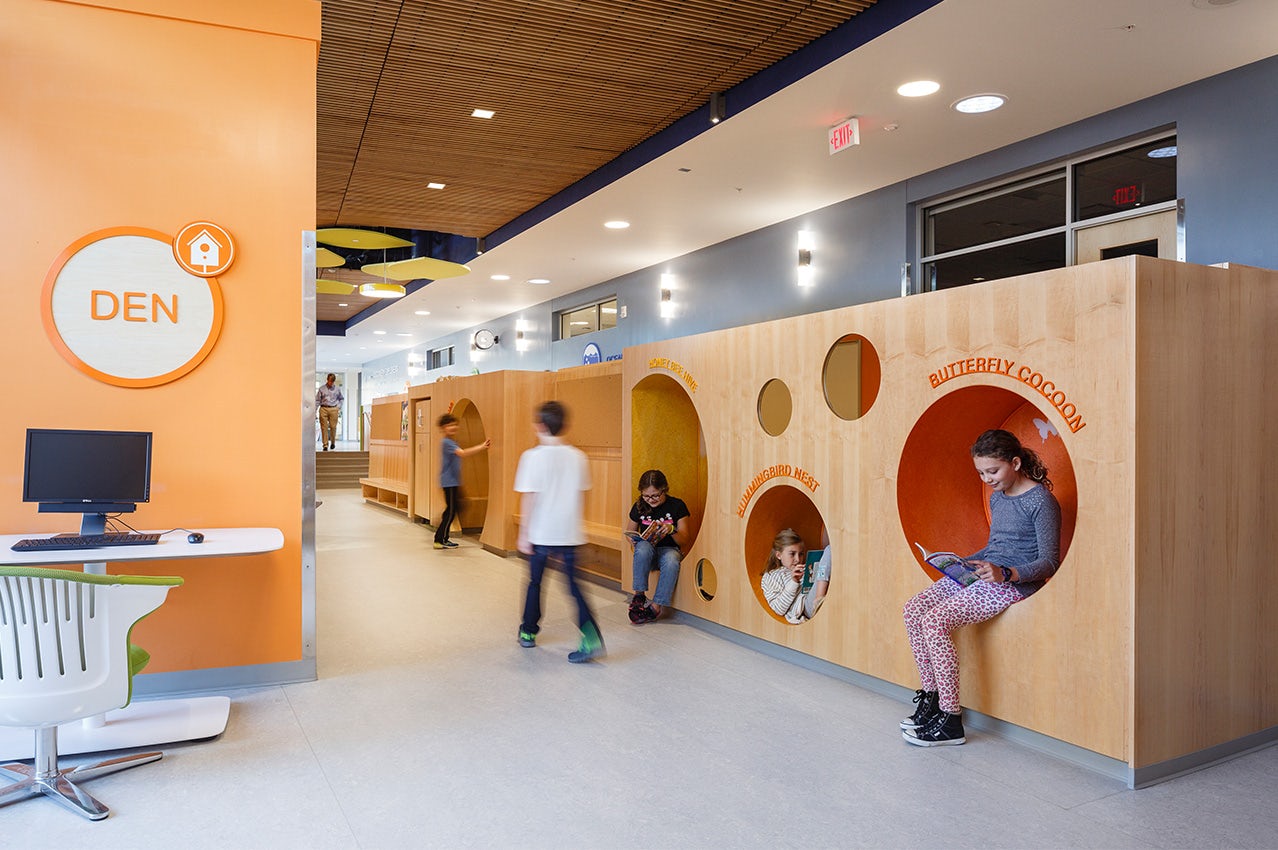This article, originally published by Modern Builder + Design, describes how the principals of VMDO value education above all things, focusing their passion and talents on designing educational spaces throughout Virginia and beyond.
Countless architecture firms set out to improve the aesthetics of their surroundings, one building at a time. The founders of VMDO Architects, however, had a grander plan in mind – improving the way young minds are molded through education, one school at a time.
“We have a passion for using our design talent to make the world a better place,” says Robert W. Moje, a founding principal of VMDO, who leads the company’s public K-12 projects. “We’re making sure pre-K through college students have places where they can reach their full potential.”
With headquarters in the shadow of Thomas Jefferson’s University of Virginia in Charlottesville, VMDO has focused its practice on the education sector since its inception in 1976. Moje and fellow founders Robert Vickery, Lawson Drinkard, and David Oakland believed so strongly in Jefferson’s philosophy regarding education’s beneficial influence on society as a whole, they based their careers on it.
“VMDO’s founder Robert Vickery understood that to be a free and self-governed society, we needed to be able to educate all people,” Moje says. “Hopefully, we’re best known for designing and figuring out creative learning environments from pre-K to post-graduate schools. As the world and technology evolves, the students themselves change.”
“We keep up to date of advances in science and how learning and the brain work,” Moje adds.
Brain Food
VMDO is researching health and eating habits and how they impact students in a learning environment. Moje says the company has teamed with educators and public health researchers to produce the Healthy Eating and Physical Activity Design Guidelines to foster a culture of wellness for children. The need for these guidelines is especially crucial considering the way children eat and stay active has changed, but the same way of feeding them has been in place for decades.
“Since the 1940s, school cafeterias have been on a factory model where you herd children through and feed them like cattle,” Moje says. “We need to change the paradigm because of the increase in obesity and numerous other eating disorders. The whole process of eating that happens in school leads to that, and we’re trying to address that.”
The shift must start with better quality and fresher foods, of course, but Moje says it extends to giving children healthy choices, teaching portion control, and the social dynamics of the timing of eating a meal. Children need time to slow down and enjoy the experience of a meal because there is a social as well as biological function that occurs.
A Place for Discovery
VMDO was responsible for the design of Discovery Elementary, a net-zero public school in Arlington, Virginia, that Moje says is proof children can learn in an environment that is inviting and encouraging.
“It was a public elementary school just like our other projects,” Moje says. “More importantly, the goal of it was to build a school defined as a place that would bring the children to experience joy in as many different ways in spaces and places throughout the day.”
Discovery Elementary – which opened in September 2015 after breaking ground in March 2013 – relies on a rooftop photovoltaic array that produces 496 kilowatts of power for the low-energy structure.
Read the full VMDO profile on the Modern Builder + Design Website: http://www.mbd-magazine.com/index.php/features/architects/288-vmdo-architects
